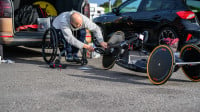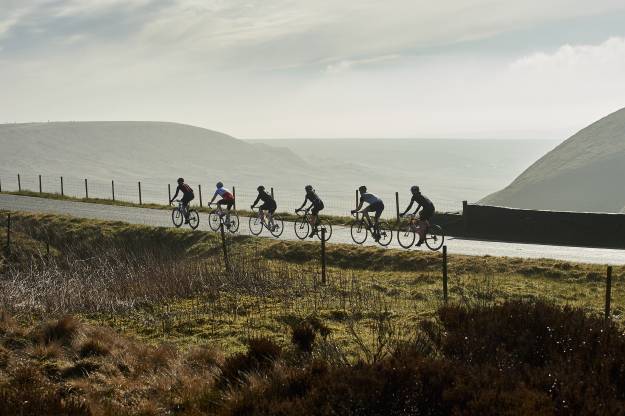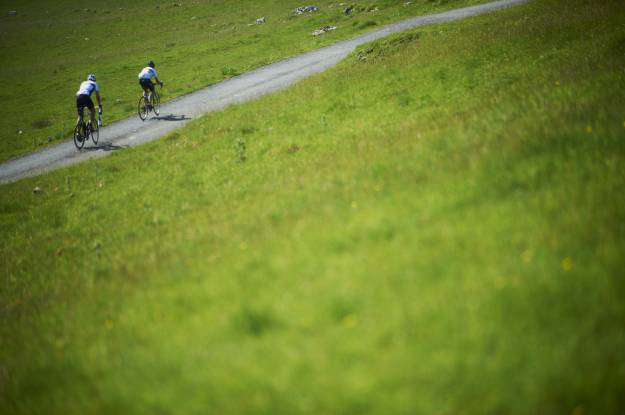Knowledge Level: Beginner
Before you head out on that first ride, here are some of the basics.
Where can I cycle?
While you can legally cycle on all roads apart from motorways, if you're only just getting started it's best to choose some quieter roads while you get the hang of things.
Alternatively, there are plenty of traffic free bike paths around the country and, if you have a mountain bike or a hybrid with fatter tyres, you can also ride on bridleways, byways and many canal towpaths.
Although the strict letter of the law is that cycling on the pavement is an offence and can land you with a fixed penalty notice, the reality is that if you feel afraid or unable to ride on the road and cycle on the pavement in a sensible and considerate manner, especially if accompanying young children, it shouldn’t be an issue.
You can find some routes close to where you live through our Let's Ride website here and other routes here.
So, what should I wear?
Whatever feels comfortable - there’s no need for specialist clothing or lycra. A t-shirt, lightweight jacket, jeans or tracksuit bottoms and trainers will be fine for a gentle ride.
If you find you get a bit saddle sore, you might want to get some padded cycling shorts to wear underneath your trousers but, for these relatively short rides, they shouldn’t be necessary.
If you’re wearing fairly loose fitting trousers, tuck your right-side ankle cuff into your socks to prevent it from catching your chain.
Do I have to wear a helmet?
No, in the UK there’s no legal requirement to wear a helmet when cycling and we strongly believe that it should be a matter of personal choice.
It’s been shown in countries where cyclist have been forced or pressured to wear helmets that this has led to a reduction in cycle use. In Holland and Denmark, for example, the vast majority of people who cycle as part of their daily life will not wear a helmet.
Modern cycling helmets are lightweight, well ventilated and comfortable though, so, if you do choose to wear one, it won’t impact on your enjoyment of your ride.
What happens if I get a puncture?
There’s no point having all the spares and tools if you don’t know how to use them. Check out this How-to video for fixing a flat and if, having watched it, you’re not 100% sure, maybe have a go at home first. Alternatively, ride a route that keeps you within walking distance of your house.
Modern bikes are pretty robust and, as long as you carry out the pre and post ride checks below, avoid obvious puncture hazards such as broken glass and keep your tyres pumped up, you shouldn't have to worry too much about punctures.
What should I carry?
Multi-tool: A multitool should have a range of allen keys, screwdriver and torx heads that will allow you to adjust all of the important bolts on your bike. Your handlebars, stem and seat post clamps are the most likely candidates for tweaking if you know what to do.
Pump: There are a whole load of options ranging from full sized frame mounted ones down to super compact mini-pumps and CO2 canister options. As a general rule, the smaller and easier to carry the pump, the more effort inflating a tyre with it will be. Most pumps give you the option to mount them on your frame but remember to remove it if you leave your bike somewhere insecure.
Tyre levers: Getting a tyre off and back on a rim can be a thumb breaking and often impossible task without a set of tyre levers. Plastic ones are lighter and less likely to damage your inner tube or rim than metal ones.
Inner tube: Make sure it’s the correct size and valve type for your wheels and tyres - check at your bike shop if you’re unsure. Take your punctured tube home, patch it and re-use.
Mobile phone: You’ll probably have it with you anyway but, when cycling, you should have your screen lock off and an ICE (In Case of Emergency) number saved.
How to carry it all
This might seem like a lot but it’ll all easily fit into a small saddle bag or a canister that you can carry in one of your bottle cages. If you don't have those, you can always just use a standard rucksack or waist bag instead.
Pre and post ride check
You can massively reduce the risk of a puncture or a mechanical by performing simple pre or post ride checks. Pay particular attention to your tyres and check for stones or shards of glass that may be embedded but haven’t yet worked their way completely through.
I’m worried about traffic, will I be safe?
Learning skills such as correct road positioning will make you a more confident cyclist and safer on the roads so, if you’re unsure, check out this video. By putting some thought and research into planning your route, you should be able to avoid the busier roads and even find some traffic-free options.
Emergency contact
It is always good to let someone know where you are going for your ride. This is just in case you get a puncture, end up needing a lift, or you are just a little later than you expected in arriving home. Count it as your personal breakdown service.
British Cycling Members save 10% at Halfords stores nationwide and online.











